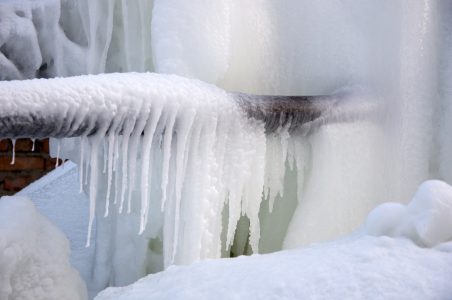Preventing Frozen Pipes in Winter: Critical Tips
Preventing Frozen Pipes in Winter: Critical Tips
Blog Article
What are your ideas about 6 Ways to Prevent Frozen Pipes?

Winter can ruin your pipes, particularly by freezing pipes. Here's how to stop it from happening and what to do if it does.
Introduction
As temperature levels decrease, the risk of icy pipes increases, possibly leading to expensive repairs and water damages. Recognizing how to stop frozen pipelines is critical for home owners in cool environments.
Prevention Tips
Protecting susceptible pipelines
Wrap pipes in insulation sleeves or use heat tape to secure them from freezing temperature levels. Focus on pipes in unheated or outside areas of the home.
Home heating strategies
Maintain interior rooms adequately heated, especially areas with pipes. Open up cabinet doors to allow cozy air to distribute around pipes under sinks.
Exactly how to identify frozen pipes
Try to find decreased water circulation from faucets, uncommon smells or sounds from pipes, and noticeable frost on exposed pipes.
Long-Term Solutions
Structural adjustments
Consider rerouting pipelines far from outside wall surfaces or unheated locations. Include added insulation to attic rooms, basements, and crawl spaces.
Upgrading insulation
Buy high-grade insulation for pipes, attics, and walls. Correct insulation assists keep regular temperatures and minimizes the risk of icy pipelines.
Safeguarding Outside Plumbing
Garden tubes and outdoor taps
Separate and drain garden tubes prior to winter months. Set up frost-proof spigots or cover outdoor taps with protected caps.
Understanding Icy Pipes
What creates pipelines to ice up?
Pipelines ice up when revealed to temperatures listed below 32 ° F (0 ° C) for expanded durations. As water inside the pipelines ices up, it increases, taxing the pipeline walls and potentially causing them to rupture.
Dangers and damages
Icy pipes can cause water supply interruptions, building damages, and costly repair work. Burst pipes can flood homes and create extensive architectural damages.
Indications of Frozen Pipeline
Identifying icy pipelines early can stop them from bursting.
What to Do If Your Pipelines Freeze
Immediate actions to take
If you believe icy pipes, keep faucets available to relieve stress as the ice melts. Use a hairdryer or towels taken in hot water to thaw pipes gradually.
Final thought
Avoiding icy pipelines needs aggressive actions and fast responses. By understanding the causes, signs, and safety nets, house owners can protect their plumbing throughout winter.
6 Proven Ways to Prevent Frozen Pipes and Protect Your Home
Disconnect and Drain Garden Hoses
Before winter arrives, start by disconnecting your garden hoses and draining any remaining water. Close the shut-off valves that supply outdoor hose bibs and leave the outdoor faucet open to allow any residual water to drain. For extra protection, consider using faucet covers throughout the colder months. It’s also important to drain water from any sprinkler supply lines following the manufacturer’s directions.
Insulate Exposed Pipes
Insulating your pipes is an effective way to prevent freezing. Pipe insulation is readily available at home improvement stores and is relatively inexpensive. Pay close attention to pipes in unheated areas such as the attic, basement, crawl spaces, or garage. Apply foam insulation generously to create a buffer against the cold. You can also wrap your pipes in heat tape or thermostat-controlled heat cables for added warmth.
Seal Air Leaks
Inspect your home for any cracks or openings that could let in cold air. Seal any holes around the piping in interior or exterior walls, as well as the sill plates where your home rests on its foundation. Additionally, make sure to keep your garage door closed unless you’re entering or exiting. Leaving it open creates a significant air leak that can lead to frozen pipes.
Allow Warm Air Circulation
During cold snaps, it’s essential to allow warm air to circulate evenly throughout your home. Leave interior doors ajar to promote better airflow. Open kitchen and bathroom cabinets to help distribute heat consistently around the rooms. If you have small children or pets, be sure to remove any household chemicals or potentially harmful cleaners from open cabinets for safety.
Let Faucets Drip
A small trickle of water can make a big difference in preventing ice formation inside your pipes. When temperatures drop significantly, start a drip of water from all faucets served by exposed pipes. This continuous flow helps prevent the water from freezing. Additionally, running a few faucets slightly can relieve pressure inside the pipes, reducing the chances of a rupture if the water inside does freeze.
https://choateshvac.com/6-proven-ways-to-prevent-frozen-pipes-and-protect-your-home/

As a passionate person who reads on Winter Plumbing Precautions: Preventing Frozen Pipes, I was thinking sharing that excerpt was worth the trouble. Appreciated our blog posting? Please quickly share it. Let somebody else check it out. Thanks for taking the time to read it.
Request Your Service Report this page